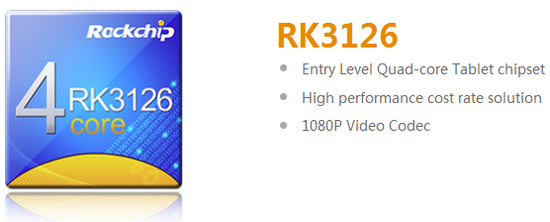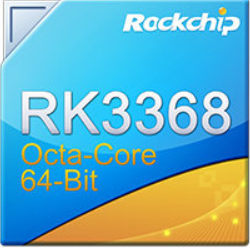The Android Wi-Fi tablet market has been fairly stagnant for the past 3 years. With less consumer demand for these products, there are less IC manufacturers designing new chips for the market and those which are still making chips are updating less frequently.
Below is a list of selected popular chips from the leading China Android tablet chipset manufacturers Rockchip and Allwinner Tech. You’ll find that both brands use ARM architectures and in some cases have very little distinction between their competing chips.
From a custom tablet standpoint, there’s usually more flexibility on Rockchips and Allwinner for special modification requests and support from the IC makers on lower volumes. The other major IC manufacturer making CPUs for Android tablets designed and manufactured in Shenzhen is Mediatek.
MediaTek has a similar, and in some cases even better, selection of processors, but getting customizations done on the Mediatek chips generally requires higher volume so this article will focus on Rockchip and Allwinner.
Entry Level
Rockchips RK3126/3128 (Released 2015)
This quad-core Cortex A7 processor is one of the most popular entry-level Android CPUs due to its stability, maturity, and low cost. The main differences between 3126 and 3128 are that 3128 supports HDMI output and supports LPDDR2.
Allwinner A33 (Released 2014)
Quad-core Cortex A7 processor will live up to the standard of a simple tablet used for consuming video up to 1080P, running standard apps, and general everyday purposes that fit most users’ demands.
| RK3128 | A33 | |
| CPU | Quad-core Cortex-A7 up to 1.2GHz | Quad-core Cortex-A7 |
| GPU | Mali 400MP2 | Mali 400MP2 |
| Display Support | Support RGB/LVDS/MIPI-DSI, resolution up to 1280*720 | Supports 1/2/4-lane MIPI DSI up to 1280×800 resolution |
| Camera Support | DVP Sensor interface, up to 5M Pixels | Integrated parallel camera sensor interface, up to 5M CMOS sensor |
| RAM | DDR3/DDR3L/LPDDR2 | Supports DDR3/DDR3L SDRAM controller, supports two ranks |
| ROM | Support MLC NAND, eMMC 4.51, Serial Nor FLASH | Supports 8-bit NAND Flash controller |
Mid Level
Rockchips RK3368 (Released 2015)
The 3368 is a powerful 64-bit octa-core and more costly alternative to the 312X series. It has an internal 8 megapixel ISP as well as high-resolution 4K HDMI output.
The internal Image Signaling Processor (ISP) makes this more compatible with a wide range of cameras than the entry-level chips giving more options for better quality and lower cost cameras.
Allwinner A50 (Released 2017)
Price-driven mid-level 32-bit Cortex A7 quad-core Android chipset that supports DDR4 and LPDDR4. Uses a 28nm IC design for lower power consumption, lower cost, and smaller size.
With an internal 13MP ISP, 1080p display and recording this chip doesn’t exceed the specs of the RK3368 but has some clear advantages. With newer technology and a low cost, the A50 has earned design wins in higher end entry level tablets and vertical market devices.
| RK3368 | A50 | |
| CPU | Octa-core Cortex-A53 up to 1.5GHz | Quad-core ARM CortexTM-A7@1.8GHz |
| GPU | Mali 400MP2 | Mali 400MP2 |
| Display Support | Support RGB/LVDS/MIPI-DSI/eDP interface, up to 2048×1536 resolution | Supports output size up to 2048 x 2048 |
| Camera Support | Embedded 8M ISP, MIPI CSI-2 and DVP interface | Maximum to 13M@15fps,8M@30fps with 4 data lane |
| RAM | DDR3/DDR3L/LPDDR2/LPDDR3 | Supports 32-bit DDR4/DDR3/DDR3L/LPDDR3/LPDDR4 |
| ROM | Support MLC NAND, eMMC 4.51, Serial SPI Flash booting | Supports 8-bit TLC/MLC/SLC/EF NAND flash, supports FDE |
High End
Rockchips RK3399Pro (Released 2017)
The top end Android tablet IC that Rockchips makes uses a dual-core Cortex-A72 CPU and a quad-core Cortex-A53 CPU (hexacore) paired with a Mali T860 GPU.
It supports a dual USB 3.0 type-C and SATA connections to external hard drives. The processor runs not only Android but also ChromeOS and Ubuntu.
Feature rich and high performance it combines a dual ISP, 4K (4096×2160) display output, 8-channel digital microphone input to make it well fitted for facial recognition, voice control, and many of the AI applications which are gaining mainstream popularity.
Allwinner A63 (Released 2017)
This Cortex A53 quad-core chipset sits in between a mid-level and a high-level Android tablet CPU, but the only other high-end contender from Allwinner would be the octa-core A83T which was released back in 2014. It’s difficult for a chip that’s nearly 5 years old to be considered high-end.
With the power to process AI functionality such as voice and facial detection, dual screen 1080p output (or 2k+ single screen output), multiple mic support, and 3D graphics processing this tablet chipset has become a favored option for designing many vertical market industrial products such as digital signage and POS systems.
| RK3399Pro | A63 | |
| CPU | Dual-core Cortex-A72 up to 1.8GHz + Quad-core Cortex-A53 up to 1.4GHz | Quad-Core ARM CortexTM-A53 |
| GPU | Mali T860MP4 | Mali T760 |
| Display Support | Dual VOP: one supports 4096×2160 with AFBC supported; the other supports 2560×1600 | Supports output size up to 2560×1600 |
| Camera Support | Dual 13M ISP and dual channel MIPI CSI-2 receive interface | Maximum still capture resolution for parallel interface to 5M Maximum video capture resolution for parallel interface to 1080P@30fps |
| RAM | Dual-channel DDR3/DDR3L/LPDDR3/LPDDR4 | Supports 32-bit DDR3/DDR3L/LPDDR3/LPDDR2 |
| ROM | Support eMMC 5.1 with HS400, SDIO 3.0 with HS200 | Supports 8-bit TLC/MLC/SLC/EF NAND flash with 80-bit ECC, supports FDE |
Allwinner began selling Wi-Fi Android chipsets when this category first became popular back in 2011. The huge overnight success made the company one of China’s better known IC manufacturers and helped it become a publicly traded company (in China).
Rockchips hasn’t gone public and didn’t start out as successfully as Allwinner, but Rockchips has continued to improve on their line of Wi-Fi Android tablet chipsets while Allwinner has veered into different product categories.
It appears that Rockchips has distinguished itself as China’s leading chipset for Wi-Fi tablets, but still faces strong competition from Taiwan’s MediaTek (which wasn’t covered in this review) in both value and popularity on mass-market consumer Android products.
(All specs are taken directly from IC manufacturer’s website.)
Yours truly, Ben Dolgin-Gardner, Hatch founder and Manufacturing Solution Expert






